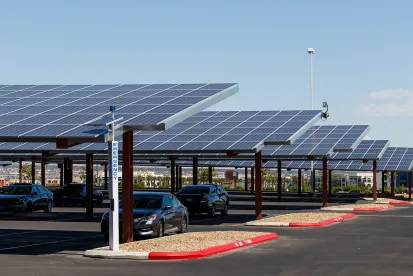This week, President Biden signed legislation designed to infuse billions of dollars into the economy to promote clean energy, manufacturing, and construction through a wide array of tax incentives and grants.
Among a host of other technologies, carbon capture and sequestration (CCS) – the act of capturing carbon dioxide (CO2) from emitting sources, liquefying the stream, and injecting the carbon dioxide into geologic strata such as saline layers far underground – will see a boost. The Inflation Reduction Act of 2022 (IRA) extends the available Section 45Q tax credit to any carbon capture, direct air capture, or carbon utilization project that begins construction before January 1, 2033, but more importantly, increases the value of those credits. The IRA seeks to jump-start wide-scale carbon sequestration projects from all industrial sectors, including fossil-fuel-fired power plants, large manufacturing facilities, and biofuels like biodiesel and ethanol.
Many scientists see CCS as a necessary technology to reduce greenhouse gas emissions and fight climate change. However, the high cost of site selection, technology development, and construction has limited its usefulness. Congress has attempted to jump start CCS deployment through numerous US Department of Energy grant programs and the use of the 45Q credit. However, to date, the costs and long development periods have limited the usefulness of the 45Q credit. The IRA’s 45Q credit program revisions are expected to increase CCS deployment across multiple industrial sectors.
Prior to the IRA, 45Q tax credits were available only to sequestration or direct air capture facilities that began construction on or prior to December 31, 2025. The per ton tax credit was applied once operations began and continued for 12 years. Tax credit rates are set per ton of carbon dioxide captured and the amount depends on whether the carbon dioxide is captured for permanent geologic sequestration or the gas will be partially captured and utilized for enhanced oil recovery or a similar use.
As noted above, the IRA substantially expands and broadens the duration, eligibility, and availability of 45Q tax credits for future CCS projects. The most notable changes are:
-
The eligible start date for CCS projects is now extended to December 31, 2032 (note, however, that the tax credit remains as before available for 12 years from the commencement of operation – this was unchanged by the IRA);
-
The minimum amount of carbon dioxide that must be captured annually is substantially reduced to 1,000 metric tons for industrial carbon capture or direct air capture facilities, 18,750 metric tons for an electric generating facility, and 12,500 metric tons for any other facility;
-
The per-metric ton 45Q tax credit is substantially increased, now up to $85 for captured and sequestered CO2, and $60 for CO2 that is reused (provided (A) prevailing wages are paid during the construction phase and the first 12 years of operation and (B) registered apprenticeship requirements are satisfied)1; and
-
Even higher tax credits are available to encourage the deployment of direct air capture projects (i.e., capturing CO2 directly from the atmosphere rather than from an industrial activity). The IRA provides a maximum tax credit of $180 per metric ton of carbon oxide captured in this manner and geologically sequestered, and up to $130 per metric ton for carbon oxide captured and used in a qualified manner (again, provided that prevailing wages are paid and apprenticeship programs are in place).
-
The IRA also provides a “direct pay” option for this and certain other tax credits. Because tax credits as a rule offset a taxpayer’s income tax liability, not-for-profits, cooperatives, governments, and other non-taxable organizations generally would not be able to directly benefit from a sequestration project. The IRA in effect makes these credits refundable. Thus, with respect to carbon capture equipment placed in service after December 31, 2022, an entity (including, in the case of the 45Q credit, both for-profit and tax-exempt entities, although with for-profit enterprises being subject to more restrictions, such as being able to elect “direct pay” only for the first five years starting with the year the facility is placed in service but not beyond December 31, 2032) is treated as if it made a payment of income tax equal to the amount of the 45Q credit to which it is entitled, allowing it to receive a refund of these deemed payments in excess of its tax liability.
The biofuels industry will benefit under the IRA not only from the availability of more lucrative tax incentives for CCS from biofuel production facilities (like ethanol plants), but also from the IRA’s extension of several existing biofuel tax credits (including credits for biodiesel, renewable diesel, and second-generation biofuels). In addition, the IRA establishes a new tax credit for the development of sustainable aviation fuel (SAF). The credit will range from $1.25 to $1.75 per gallon depending on the extent of greenhouse gas reduction in the development of the SAF.
Companies seeking to avail themselves of the carbon and clean fuel tax credit benefits offered under the IRA are encouraged to carefully examine the legislation.
FOOTNOTES
1 Projects financed with tax-exempt bonds would have the credit amount reduced by the lesser of (1) 15 percent; or (2) the fraction of the proceeds of a tax-exempt obligation used to finance the project over the aggregate amount of the project’s financing costs.





 />i
/>i
